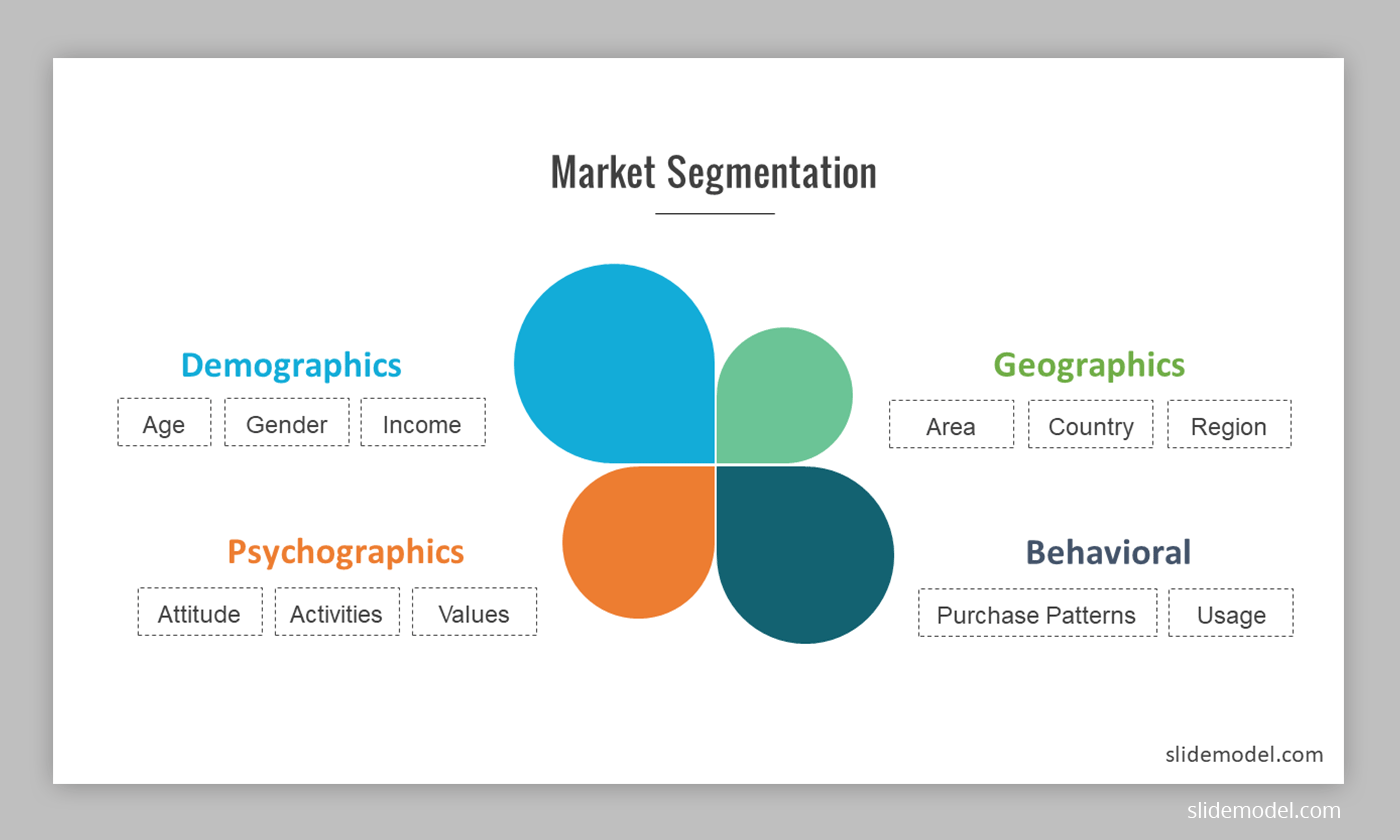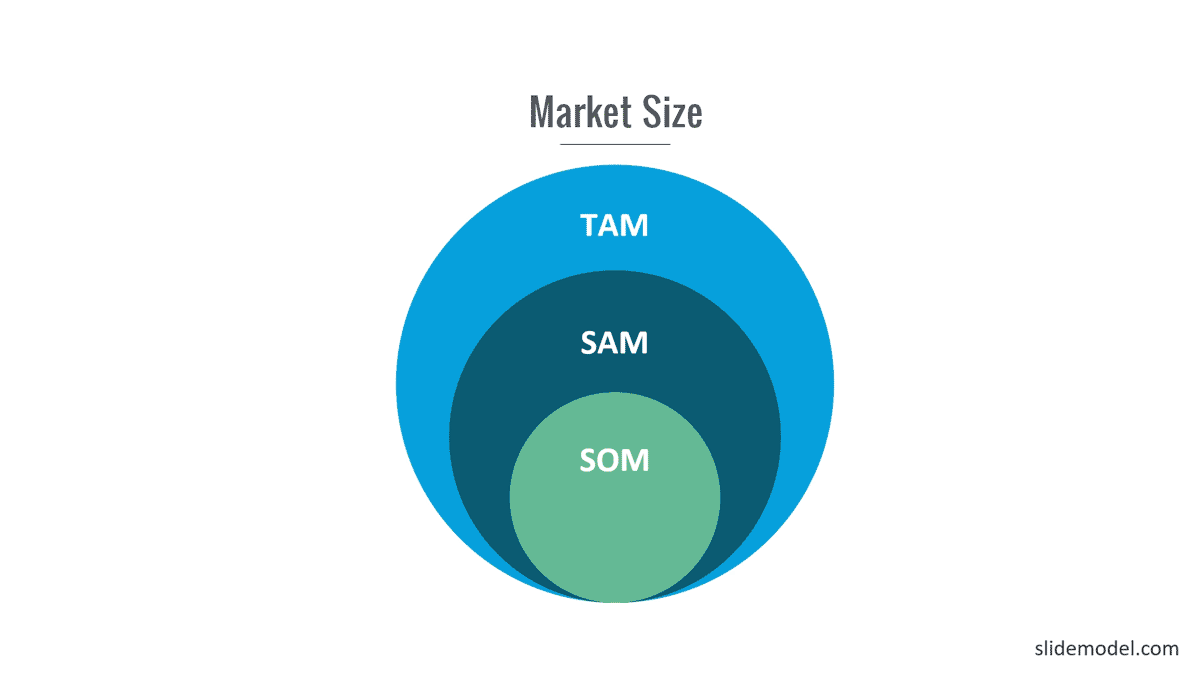
You may have a great product, top-notch go-to-market strategy and a bullet-proof sales campaign, and still fail to generate the revenues you expected. Why? Well, because you are trying to spray and pray approach – trying to appeal to everyone and hoping that someone will bite. In most cases, such campaigns end up appealing to no one in particular.
So what smart marketers are doing instead? They are going after a very specific group of buyers from the start and personalize their pitches to them. How do you determine which demographics to go after? You leverage market segmentation.
What is Market Segmentation
Market segmentation is the process of dividing your target audience into groups so that you can better approach them with different offerings and sales pitches. Segmentation can be done according to a variety of criteria. The idea is that marketing to customer groups who have similar characteristics allows you to create campaigns that are more likely to resonate.
The Benefits of Market Segmentation
The purpose of market segmentation is to absolutely help your marketing efforts. However, the reasoning behind why it’s worth spending time on segmentation goes beyond that. For example:
- 62% of advertisers, publishers, and tech developers name segmentation as a top priority when it comes to successfully targeting ads. Better segmentation = higher return on investment from your campaigns.
- Segmentation leads to a better understanding of customer needs that can inform future product development. It helps you to make better decisions by taking the wants and needs of your customer base into account and shaping them into new offerings.
- It improves go-to-market planning and increases your chances of a successful launch.
- You’ll improve customer retention and acquisition. 44% of marketers use customer segmentation to decide their customer acquisition strategy. 38% of them use market segmentation strategy, to determine their retention strategy.
- Finally, as much as 81% of executives name market segmentation as an essential component of growing profits.
The Different Types of Market Segmentation

There are four primary different types of market segmentation. These are:
Geographic – People who live in the same geographic area often have other similarities beyond their location. They may share cultural experiences and preferences, be attracted to similar trends, even have similar needs relating to local events. For example, if you owned a clothing store, you might market clothing featuring designs by local artists for people living within a certain area. To best use this method of segmentation, you’ll need to collect and store location-related data about your customers.
Demographic – Demographic segmentation is the most popular way of segmenting customers. It involves placing them into groups according to very basic population characteristics. These include age, gender, marital status, level of education, income, religion, marital status, and occupation. Using this often involves segmenting people by a combination of criteria and molding them into target buyer personas. For example, someone who owns a microbrewery might create a segment of customers between the ages of 25 and 40, making more than 50K per year, who are college-educated.
Psychographic (also referred to as lifestyle segmentation) – The aim here is to segment customers according to their hobbies and interests. Psychographic segmentation is most commonly used in niche marketing where consumer interests, quality, and branding tend to be prioritized over factors such as pricing. A company selling fine wines might use psychographics to connect with audience members who are most interested in buying expensive wines.
Behavioral – Behavioral segmentation is becoming more popular as businesses are increasingly able to use big data to better understand their customers. By tracking, purchasing patterns and on-site behavior, for example, brands can curate product recommendations even customize special offers for target audience members.
Market Size (The TAM-SAM-SOM Approach)
Many marketers also use the TAM-SAM-SOM approach to further segment the market. This is a methodology that allows you to better understand your business as it relates to market size. Here are some definitions of the acronyms:
TAM – Total Addressable Market. This is the demand for your products and services. In other words, this is the business you could have if you could gain 100% market share.

Example of Market Size slide with TAM-SAM-SOM diagram using one of the templates available in SlideModel.com
SAM – Serviceable Available Market. This is the market that you actually have the potential to reach. For example, imagine that you open a bodega on the south side of a very large city. Your serviceable market isn’t likely to extend from one end of the city to another. People don’t generally drive across town to shop at a bodega.
SOM – Serviceable Obtainable Market. This is the market that you are most likely to reach. To really understand this, and calculate it, you must gain a deep understanding of the needs of your serviceable market, and how your company can meet those needs.
Quick Market Segmentation Examples
What does market segmentation look like when it’s applied in the real world? Here are a few examples illustrating different approaches to market segmentation.
Apple largely targets affluent consumers as well as those who tend to adopt new technologies early. Their entire brand has a lux, tech-forward vibe, backed by the same level of in-person experiences. This is a good example of psychographic marketing.
Grocery brands such as Whole Foods and Trader Joe’s also engage in segmentation. They tend to target health-conscious consumers, have disposable income, and are willing to spend money on organic and otherwise healthy food.
Finally, banking products are typically marketed to people with specific demographic characteristics. For example, retirement products may be marketed heavily to people over the age of 30. Fraud protection could be used to market to senior citizens who may be at higher risk of being exploited.

Source: Market Share Diagrams for PowerPoint by SlideModel
Best Practices For Market Segmentation
Now that we’ve covered the market segmentation definition, benefits of segmentation, and gone through some examples, it’s time to go over how to segment a market.
The first thing you’ll want to do is start with as much information as possible. This will give you more options in the future, as you may wish to change up your segmentation needs to help you reach your goals. To do this, create a data collection process to assemble various insights about your buyers’ location, preferences, and common behaviors.
Many companies use both owned data as well as external market share data to create an overall market profile, as well as individual customer personas. Here are some tips for doing that.
- Consider all of the channels through which you collect customer information. This includes email, website analytics, and social media data.
- Don’t forget the information you can gather via your offline channels such as data collected from point of sale systems in brick and mortar locations, information from direct mail campaigns, or attendance related data from events.
- If you have an app, there’s another source of potentially useful data. Information on who has downloaded the app, whether or not they are engaging with it, and how they are using it specifically can tell you quite a bit about how people are interested in interacting with your brand.
- Customer experience surveys and Voice of Customer data are great market research tools for obtaining information, directly from your audience. However, care must be taken to ensure that surveys are written in a way that encourages audiences to be forthcoming.
- External data such as census data can be used in addition to the data that you own. There are several, publicly accessible databases that you can use to collect information that will allow you to hone your market profile, and your customer personas.
Once you have the preliminary data at hand, move on to the next steps in market segmentation.
Define The Main Market and Sub-Markets
Here, you’ll want to start with a large enough market definition that it can be segmented later. On the other hand, you don’t want the types of markets you define to be so large that it’s too generic to be valuable. For example, if you owned a restaurant, ‘people who go out to eat’ is too large of a category to lead to effective segmentation later. Instead, your market might be casual dining customers.
From there, you can divide that into submarkets. In this case, casual dining customers may be divided into different types of cuisines such as homestyle, Asian, Italian, or American.
Now, you can begin to create market segments. For example, your restaurant might target the following segments:
- Professionals looking for a quick and convenient lunch option.
- Health-conscious eaters who are interested in vegetarian, low carb, or locally sourced options.
- Single people with disposable income who are interested in dining out socially.
It can help to create profiles or to use a market segmentation chart to create a visual representation of the segments you create.
Test Market Segments For Viability
Not every segment you create will be viable. For example, you may find that upon further investigation, you don’t offer enough healthy options to effectively target health-conscious consumers. Here are some characteristics that you are likely to see among viable customer segments:
- There is a significant number of likely customers who fits the criteria of a specific segment.
- The customers within each segment should have relevant similarities.
- There should be data available to at least somewhat accurately predict the size of each segment.
- The sales potential should be large enough to make the segment worth targeting.
- The customer segment should be responsive to targeted marketing efforts.
Ultimately, you will be able to create a market segmentation report that you can use to get other decision-makers on board.
Refining Models and Creating Segment Profiles
A segment profile is a detailed description of audience segmentation. This is something you create to further narrow down your marketing efforts. This profile will detail customer needs, behaviors, product usage, brand preferences, etc.
Evaluate The Attractiveness of Each Segment Profile
Finally, you’ll need to evaluate the value of each segment profile to your company. The best segmentation approach is one that meets the following criteria:
- Does targeting this segment fit into our goals and objectives?
- Will this segment become profitable for us?
- Is there growth potential?
- Do we have the capabilities and understanding to effectively target this segment?
If you segment your target audience effectively, you can create marketing campaigns that are more likely to be successful. You’ll be able to create marketing content and ad campaigns that are meaningful to your target audience. You can then use segmentation for target market analysis to provide you with good insights into the success of your efforts, and further tweak your approach so that it leads to more conversions and sales!


